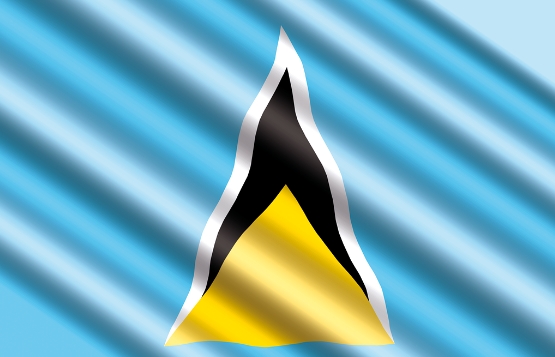
The Citizenship by Investment Programme
Some information about Saint Lucia
The state of Saint Lucia is located on the same island in the archipelago of the Lesser Antilles in the West Indies between the Islands of Saint Vincent and Martinique.
The island is washed by the Straits of St. Lucia to the North and St. Vincent to the South, which connect the Caribbean Sea with the Atlantic Ocean. The teardrop island is approximately 44 km long and 23 km wide, with a total area of 617 square km (238 sq mi) – the second largest in the South windward group. The total length of the coastline is 158 km (119 miles).
The island of St Lucia represents the pinnacle of ancient volcanic groups, whose cones constitute the principal mountain peaks of the country, reaching great heights on the mountain Jimmy (950 m or 3,116 ft). The natural beaches of the island are black volcanic sand, but most hotels cover them with white sand.
The capital is the city of Castries. English is the official language, but a significant part of the population speaks the local dialect of French – patois. The population is about 178 thousand (2017). St. Lucia’s currency is the East Caribbean dollar (XCD).
History
Saint Lucia was discovered by Christopher Columbus on 13 December 1502, the Day of Saint Lucia. The first attempts to establish a permanent settlement were made by the British in the period from 1605, but were unsuccessful because of the resistance of local residents. Since the middle of the XVII century began the mass import of African slaves to work on sugar plantations.
Until 1814, when the island finally came under British jurisdiction, Saint Lucia was a scene of ongoing conflict between England and France; it passed from hand to hand 14 times.
In 1834 the British government abolished slavery on the island. From 1838 to 1958 Saint Lucia was part of the British colony of the Windward Islands, from 1958 to 1962 — of the UK West Indies Federation. In 1967, Saint Lucia was granted the status of an associated state with the Great Britain and received the right of self-government in internal Affairs. Full independence was granted to Saint Lucia on 22 February 1979.
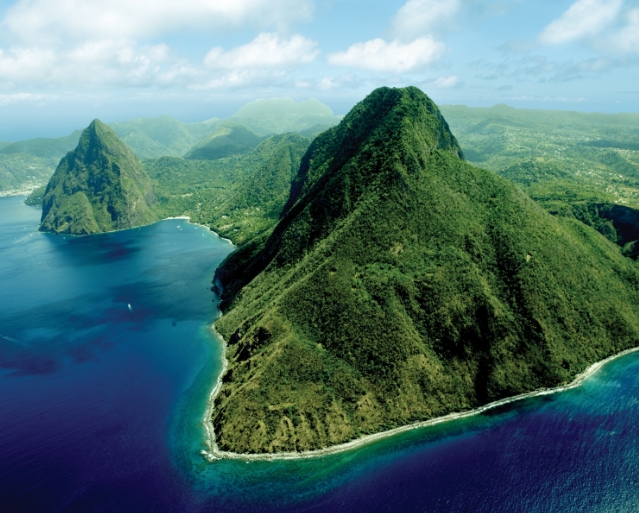
Tax Heaven
The offshore zone of Saint Lucia is a classic tax-free jurisdiction that does not require complex procedures to support the company and its annual reporting. Since Saint Lucia tax-free legislation is relatively recent (since 1999), the country has not yet managed to gain such popularity among entrepreneurs as other, more well-known offshore jurisdictions. The registration and operation of companies in the jurisdiction of Saint Lucia is governed by the International Business Company Act 1999. Saint Lucia is a major destination for foreign business and investment in the offshore banking and tourism sector. An international company registered in Saint Lucia must have a registered agent and a registered office. The company must appoint an official responsible for corporate relations in the company. The peculiarity of Saint Lucia is that it is one of the countries whose legislation is favorable for the creation of non-resident insurance and reinsurance companies.
Government Administration
The state of Saint Lucia, a member of the British Commonwealth of Nations, is a parliamentary monarchy. The head of state is the British monarch, represented on the island by the Governor-General. The legislature is represented by a bicameral Parliament: the Upper house, the Senate, and the House of Assembly. Executive power belongs to the government — the Cabinet of Ministers. It is headed by the Prime Minister. The Governor-General gives instructions to form a government and approves its composition after approval by Parliament, appoints members of the Senate, dissolves Parliament on the recommendation of the Prime Minister and appoints new elections, signs laws and approves the appointment of senior government officials. Administratively, the country is divided into 11 parishes. In each of them there are local city and village councils. Member countries of the Organization of Eastern Caribbean States (OECS) – Antigua and Barbuda, Dominica, Grenada, St. Vincent, St. Kitts and Nevis and St. Lucia – have a joint Supreme Court of the Eastern Caribbean, with headquarters in Saint Lucia. It consists of the Supreme and Appeal courts. The highest authority is represented in Grenada by the Judge-resident. Saint Lucia does not have a regular army. The special service and the coast guard are under the command of the Royal Saint Lucia police.
The Citizenship By Investment Programme
Citizenship Details
The St. Lucia Citizenship by Investment Programme became law in 2015. One of the main differences is that there are four investment options available to applicants. Investment options are one of the most important elements of any economic citizenship programme. The more of them, and the better they are thought out, the more investors will pay attention to the relevant jurisdiction. The Saint Lucia programme is distinguished by the possibility of return investment in government bonds (this option is not available in any of the four other passport programmes in the Caribbean). Saint Lucia passport is an excellent document for traveling around the world (without a visa you can visit 120 countries, including the UK and all EU countries). It is worth noting that currently the program of Saint Lucia is the most profitable of the programs on the market.
In order to qualify, applicants must have no criminal records, be in good health, have high personal net worth and be able to invest in one of the approved projects.

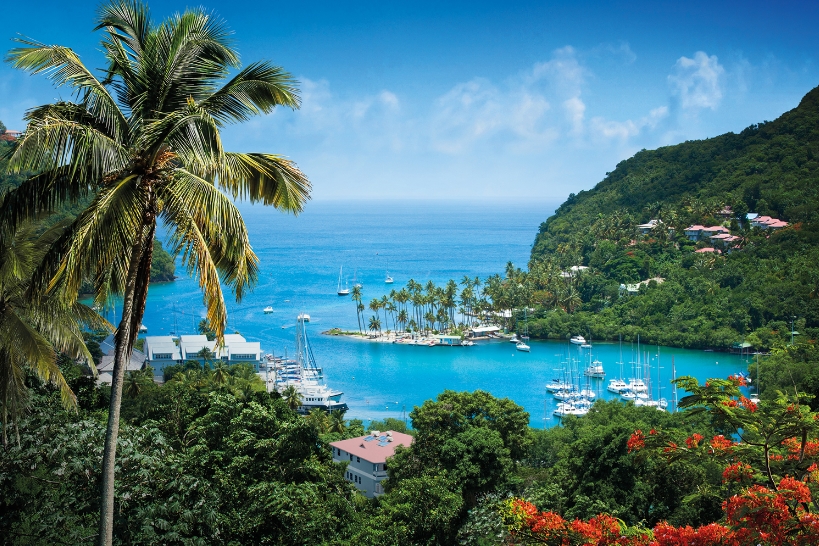
Features and benefits
Citizenship and passport of Saint Lucia is
Benefits of acquiring Saint Lucia Citizenship
A qualifying investment under the Citizenship by Investment Programme shall satisfy at least a minimum investment in one of the four approved areas.
Country Development
Economy
Saint Lucia is one of the Windward Islands, a group of islands located off the southeast coast of North America. Due to its small size and relative lack of geological resources, its 2000s economy relies primarily on the sale of banana crops, and the income generated from tourism, with additional input from small-scale manufacturing.
Traditionally, the economy of Saint Lucia was based on agriculture, the cultivation of sugar cane (ceased in 1964), and the production and export of bananas. The main wealth of the island is fruit plantations, broken in its wide fertile valleys. Bananas, coconuts, mangoes, cocoa, oranges and grapes until recently formed the basis of the economy of Saint Lucia. The growing competition from banana producers in Latin America dictated the need to diversify the island’s economy. In 2006 the Governor stated: “While living standards have improved for many, a large number of persons has been pushed to the margin of economic activity especially in the areas which once depended heavily on the banana industry for a livelihood.” The island’s banana output was heavily impacted in 2007 by the passage of Hurricane Dean.
The country began to attract foreign investment, especially in the offshore banking and tourism industry. In order to broaden the island’s economic base, the government added small computer-driven information technology and financial services as development objectives. The country managed to attract foreign investment and foreign business. In 2006, several tourist facilities were built with foreign direct investment. Tourism has become the main source of income, and tourist services provide the largest number of jobs. Currently, the economy of Saint Lucia is based on tourism and offshore business.
St. Lucia’s leading revenue producers—agriculture, tourism, and small-scale manufacturing—benefited from a focus on infrastructure improvements in roads, communications, water supply, sewerage, and port facilities. Foreign investors also have been attracted by the infrastructure improvements as well as by the educated and skilled work force and relatively stable political conditions. The largest investment is in a petroleum storage and transshipment terminal built by Hess Oil. There is a transit oil terminal and an oil refinery. The Caribbean Development Bank (CDB) funded an airport expansion project.
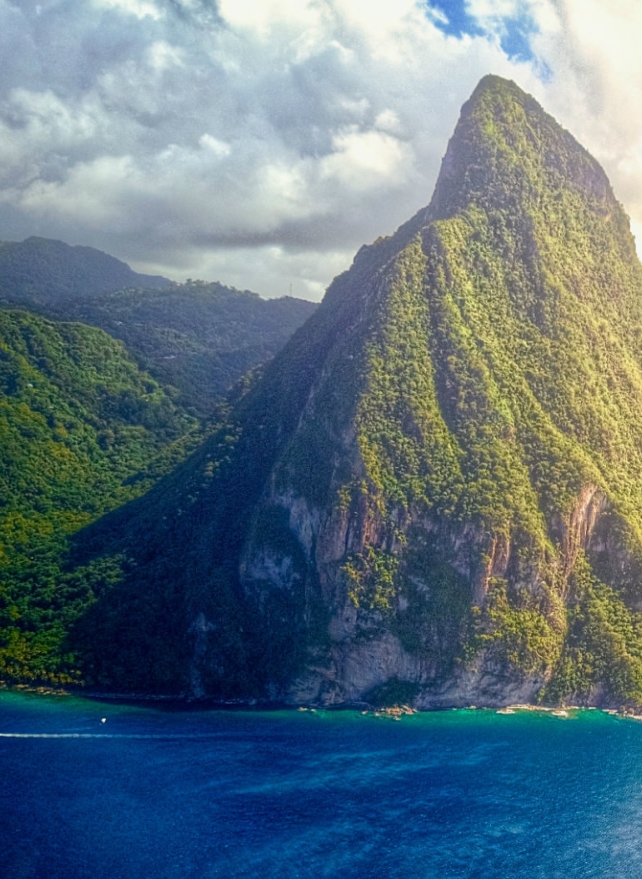
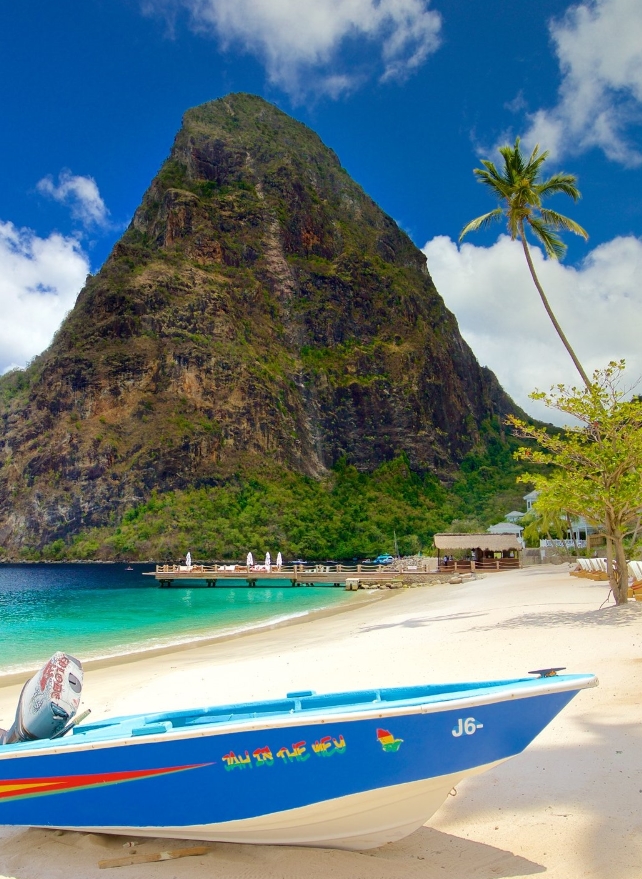
The industrial sector is the most diverse of all the countries in the East Caribbean region. There are a number of small enterprises for the production of cigarettes, building materials, textiles, clothing, batteries and electronic devices, beverages, processing of agricultural raw materials. Fishing is carried out, the products of which are supplied to the domestic market. Point Serafin (Vigi Peninsula, Castries) is the largest duty-free trade complex in the Caribbean.
The country has developed automobile communication. All major settlements are connected with sea ports and the capital by the ring road. Of the 1,210 km of roads, only 63 km are paved. There are two airports. St. Lucia is a member of the Eastern Caribbean Currency Union (ECCU). St. Lucia’s currency is the Eastern Caribbean Dollar (EC$), a regional currency shared among members of the ECCU. The Eastern Caribbean Central Bank (ECCB) issues the EC$, manages monetary policy, and regulates and supervises commercial banking activities in its member countries. The ECCB has kept the EC$ pegged at EC$2.7=U.S. $1.
St. Lucia is a beneficiary of the U.S. Caribbean Basin Initiative and is a member of the Caribbean Community and Common Market (CARICOM). The country hosts the executive secretariat of the Organization of Eastern Caribbean States (OECS).
St. Lucia is a beneficiary of the U.S. Caribbean Basin Initiative and is a member of the Caribbean Community and Common Market (CARICOM) and the Organization of Eastern Caribbean States (OECS).
St. Lucia is the headquarters of the Eastern Caribbean Telecommunications (ESTEL) authority, which is developing the regulations to liberalize the telecommunications sector in the region by 2004.
Saint Lucia’s relatively efficient legal system secures private property and sustains macroeconomic stability. The business environment is generally efficient and transparent, and the regulatory framework has become streamlined. Tourism is the primary driver of the economy and the main draw for foreign investment.
The Gross Domestic Product (GDP) in St Lucia was worth 1.737 billion US dollars in 2017. The GDP value of St Lucia represents less than 0.01 percent of the world economy. Distribution of GDP by industry: agriculture – 7%, industry – 20%, services – 73%. Employment structure: agriculture – 22%, industry and trade – 25%, services – 54%. The value added tax (VAT) introduced in October 2012, after the approval of the Law on VAT in the Senate. The standard VAT rate was 15%, along with a 0% rate for some goods and services. The main export partners are the United Kingdom, the United States, South Korea and the Caribbean community. Bananas remain the main export crop.
Food, industrial goods, machinery and equipment, fuel mainly are imported into the country from Brazil, the United States, the United Kingdom, the Caribbean community, Japan and Canada. Actively developing foreign tourism provides about 50% of foreign exchange earnings. Every year the country is visited by about 300 thousand tourists. The country depends on a variety of external risk factors, including volatile tourism revenues, natural disasters and dependence on foreign oil.
The small financial sector has not been severely affected by the recent global financial turmoil, but tourism has suffered. Improved access to financing remains critical to generating more broad-based private-sector development. Expansionary government spending has increased public debt to over 80 % of GDP. Saint Lucia has one of the lowest levels of corruption in the West Indies. Access to information is legally guaranteed, and government officials must disclose their financial assets annually to the Integrity Commission. However, while the law provides criminal penalties for official corruption, enforcement is not always effective. The independent judicial system’s highest court is the Eastern Caribbean Supreme Court.
The top personal income and corporate tax rates are 30 %. Other taxes include a consumption tax and a property transfer tax. The overall tax burden equals 22.6 % of total domestic income. Government spending has come down to 31.3 % of GDP, and the deficit remains over 5 % of GDP. Public debt is over 80 % of total domestic output. Fiscal health fluctuates with changes in commodity prices.
Saint Lucia’s average tariff rate is 9 %. Saint Lucia is a member of the World Trade Organization, the Organization of Eastern Caribbean States, and the Caribbean Community and Common Market. Foreign investment must be approved by the government.
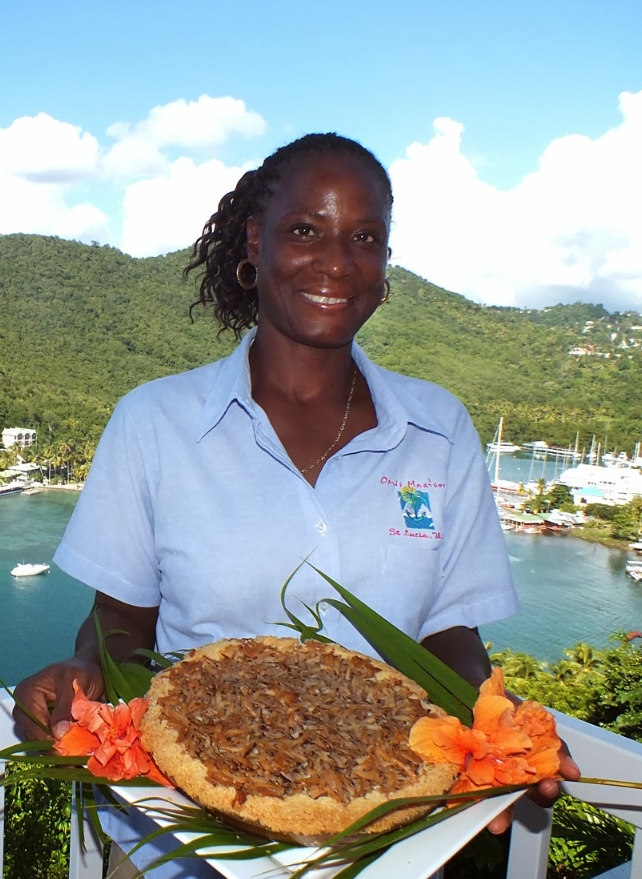
Nature and culture
Saint Lucia is famous for its exotic plants, tropical forests and gardens, sandy beaches on the West coast, natural healing mineral springs and unique underwater world, endemic animals, opportunities for fine fishing, Windsurfing, horse riding and unique descents into volcanoes. The volcanic island of Saint Lucia is more mountainous than most Caribbean islands, with the highest point being Mount Gimie, at 950 meters (3,120 feet) above sea level. An integral symbol of St. Lucia – twin peaks the Pythons, form the island’s most famous landmark.
They are located between the volcano Soufriere and Choiseul on the western side of the island. There are abundant traces of active volcanic activity — hot sulfur springs, eroded lava fields, gas outlets, and sulfur deposits. The slopes of the volcanic massif are covered with lush tropical forests, and numerous short rivers form wide and fertile valleys. Saint Lucia is the only island in the world that contains a drive-in volcano.
The coast of the island is formed by a narrow strip of coastal lowland and heavily indented. The South-Eastern and North-Western shores form a kind of skerries with numerous bays and coves, framed by many tiny reefs.
Pink coral reefs protrude from the water off the coast — a great place for diving. Also, thanks to the smooth, constantly blowing winds, the coast is very popular yachting and Windsurfing. The Lesleen M, a 165-foot freighter, was sunk by the Department of Fisheries in 1986 to provide an artificial reef. It is covered with hard and soft corals, sponges and hydroids, and provides an ideal habitat for many juvenile fishes such as Queen and French angel fish.
Turtles and barracudas also frequent this wreck. It lies upright in 60 ft of water in the bay of Anse Cochon on the west coast, just south of Marigot Bay. The climate is tropical trade winds; sea winds soften the heat. The average monthly temperature is about 18-26 °C, precipitation from 1500 to 3000 mm per year. Dry season is from January to April; rainy from May to August. At any time of the year may be powerful, but short-term torrential rains, falling usually at the end of the day. There are often devastating tropical hurricanes, especially frequent in late summer.
There are about 400 species of plants on the island; palm trees, all kinds of shrubs, orchids and other exotic flower like Anthurium form a dense carpet covering the slopes of mountains, valleys, rivers and even roadsides. The nature of Saint Lucia is unique in that it is home to several endemics: the Antillean Saint Lucia arboretum – perhaps this bird has already disappeared, its way of life is not known; the bluefaced Amazon – this parrot in 1980 was officially declared the national bird of Saint Lucia. Maria Island reserve, which is located to the East of the Vieux Fort, is the only habitat of the cow snake “kuve”, which is one of the rarest varieties of the snake. There is one of the rarest reptiles – a species of lizard, Anolis luciae, is named for and is endemic to Saint Lucia.
Saint Lucia boasts the second highest ratio of Nobel laureates produced with respect to the total population of any sovereign country in the world. Two winners have come from Saint Lucia: Sir Arthur Lewis won the Nobel Prize in Economics in 1979, and the poet Derek Walcott received the Nobel Prize in Literature in 1992.
Saint Lucia is the venue of the famous jazz festival that gathers musical talents from all over the world in early May. Every year in February and March carnivals are held here, in November – the main yacht regatta of the season – ARC, many festivals attract travelers during the year.
Company
Investment programmes
© 2021 All rights reserved.